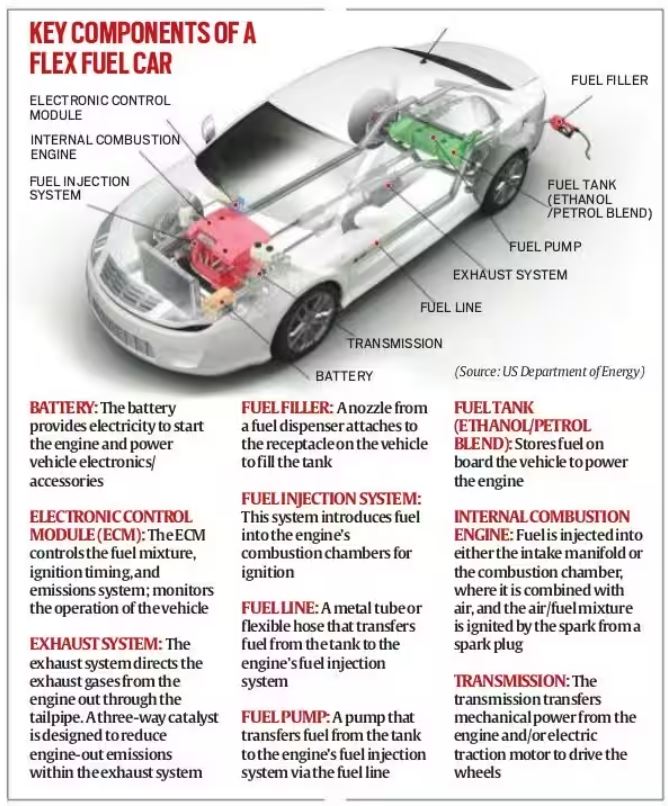7667766266
enquiry@shankarias.in
India launched the world's first prototype of the BS 6 Stage II ‘Electrified Flex Fuel Vehicle’, developed by Toyota Kirloskar Motor.
FFV differ from bi-fuel vehicles by the fact that two fuels are stored in the separate tanks and engine runs on one fuel at a time in the latter.
|
Hybrid vehicles |
|
Air fuel ratio is defined as the ratio of air and fuel of a mixture prepared for combustion

The National Biofuel Policy 2018 envisages a 2025 target of 20% blending.
BRAZIL MODEL
References